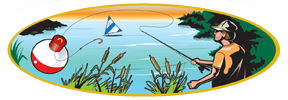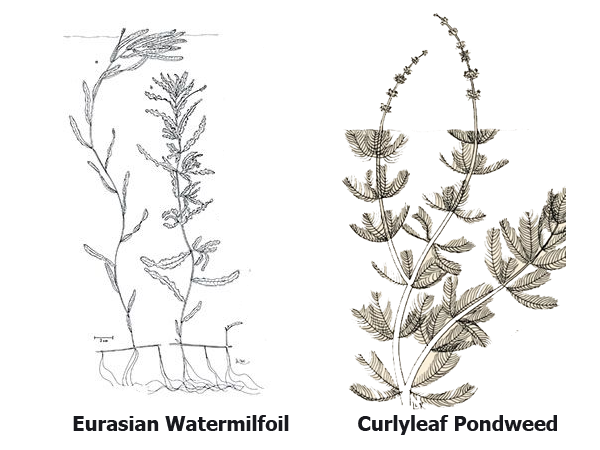
Weed Control

Since the late 1990s, Hardwood Lake has been experiencing significant ecological and recreational challenges due to the rapid proliferation of non-native aquatic plants, specifically Eurasian Watermilfoil and Curlyleaf Pondweed. These invasive species disrupt the natural balance of the lake's ecosystem by outcompeting and displacing native aquatic plants, which are essential for maintaining healthy fish populations and overall biodiversity. Eurasian Watermilfoil, known for its dense underwater stands and surface mats, grows earlier and tolerates colder temperatures better than native plants, allowing it to dominate quickly. Its thick mats reduce oxygen levels when they decay, degrade water quality, and create unfavorable habitats for fish and wildlife. Similarly, Curlyleaf Pondweed forms dense surface mats that obstruct sunlight, consume nutrients prematurely, and interfere with native plant growth. Both species impede recreational activities by creating tangled, floating vegetation that hinders swimming, boating, and fishing. Their spread is facilitated by fragments easily transported on boats, trailers, and fishing gear, making their control and prevention difficult and labor-intensive.
Formation of the Lake Improvement Board
In response, property owners petitioned for and established the Hardwood Lake Improvement Board in 1995. This Board created a special assessment district dedicated to invasive weed control and lake health preservation.
Integrated Weed Management Program
The Board contracted ProgressiveAE of Grand Rapids to oversee a comprehensive weed management program that balances ecological integrity with recreational needs. The program primarily employs:
Aquatic Herbicide Treatments: Targeted application of approved aquatic herbicides to control invasive species without harming native plants, fish, or wildlife. These treatments weaken invasive plants like Eurasian Watermilfoil and Curlyleaf Pondweed, reducing their spread while maintaining lake balance.
Ongoing Monitoring and Adaptive Management
Regular mapping and lake vegetation surveys guide treatment locations and program adjustments.
Treatment maps and lake health reports are available for community review.
Contact David Sommers, association representative, for detailed program updates and participation opportunities.
Education and Resources
For further information about aquatic weed control methods and lake management best practices, visit:
Midwest Aquatic Plant Management Society (mapms.org)
Michigan Lake Info (michiganlakeinfo.com)


